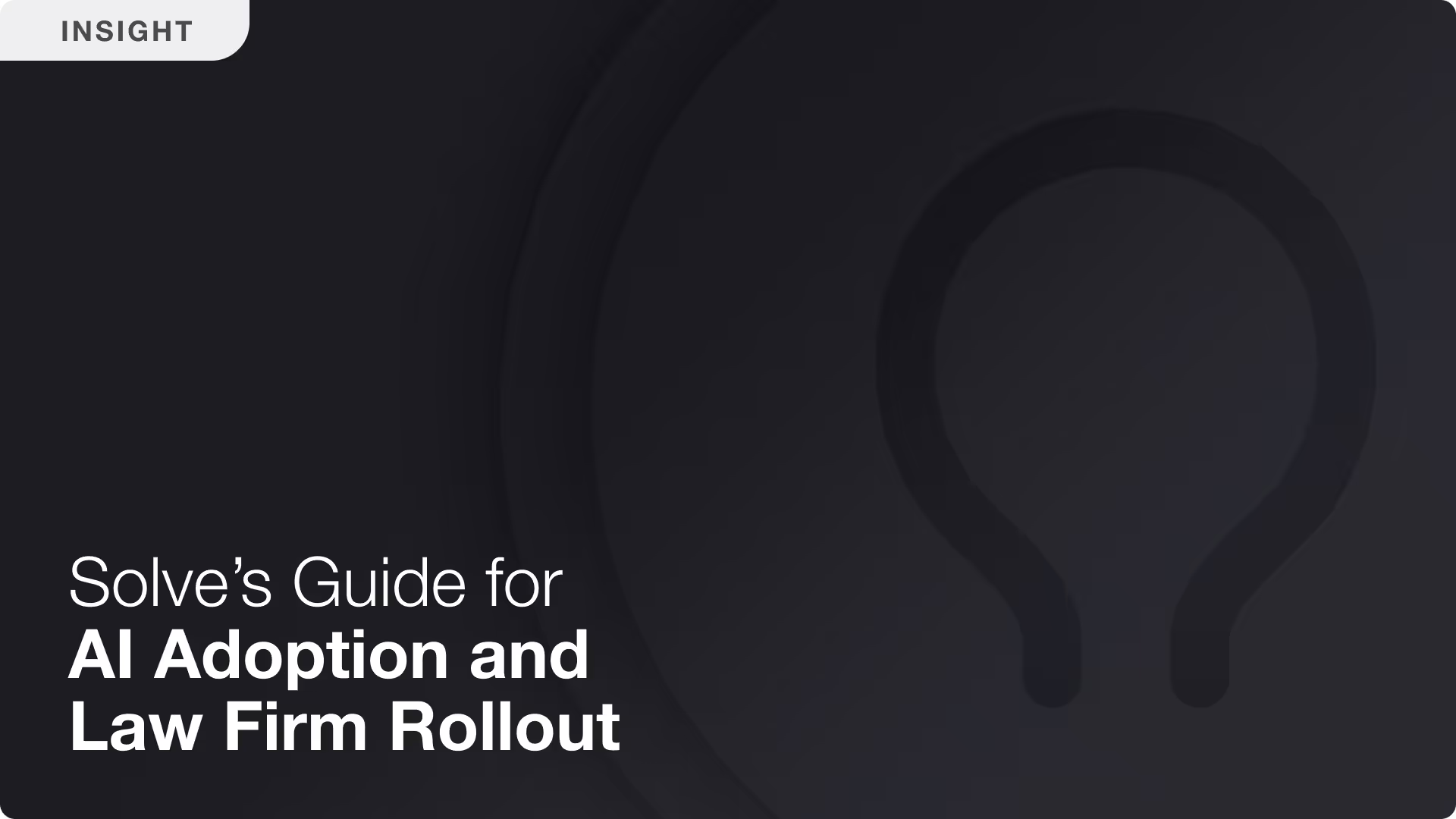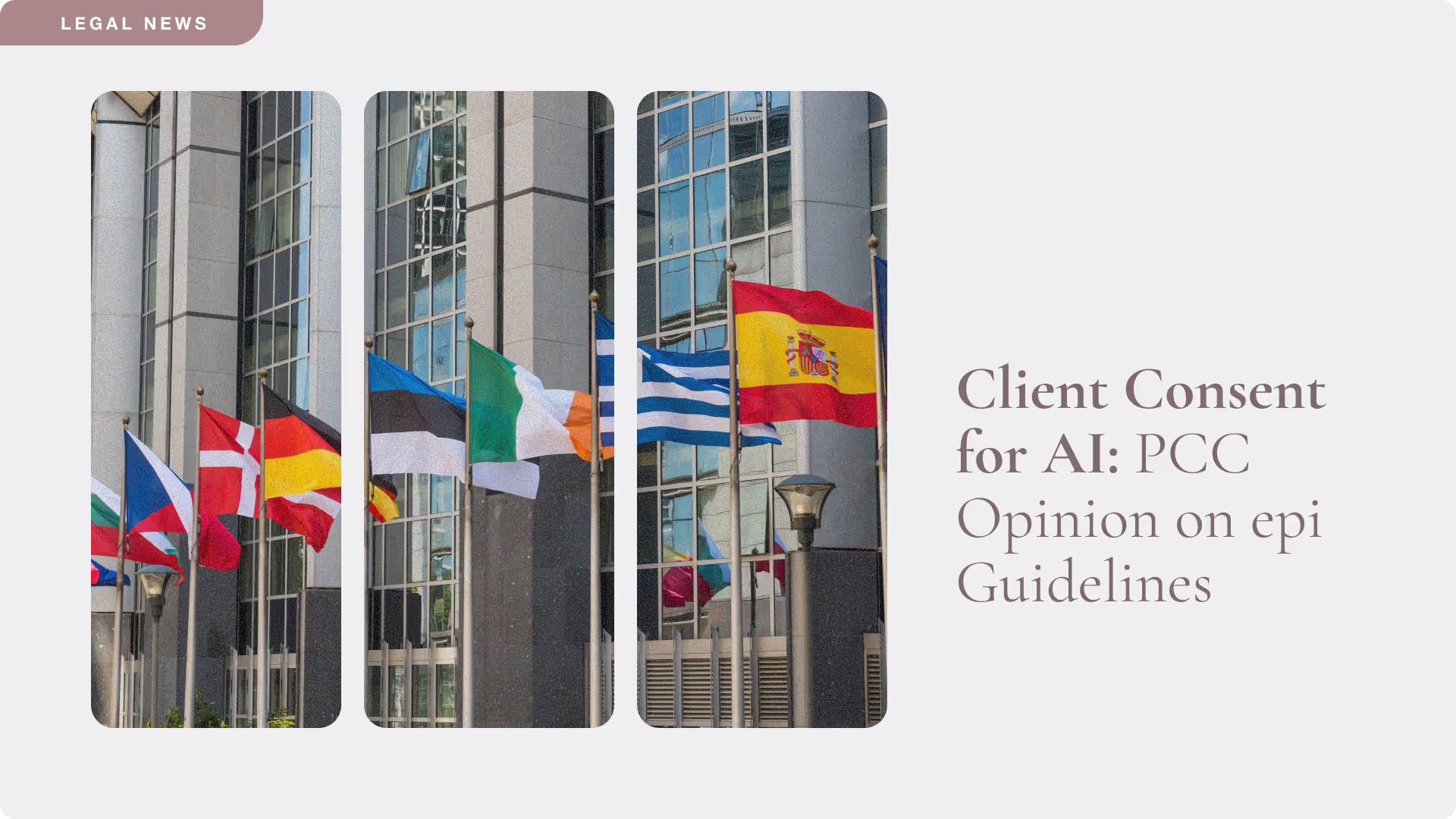Ethical Considerations of Using AI Tools for U.S. Lawyers
The rapid rise of generative artificial intelligence (AI) is reshaping numerous industries, including the legal profession. For U.S. lawyers, AI tools offer tremendous potential to improve efficiency, accuracy, and speed in completing routine and complex tasks alike. However, alongside the benefits of these powerful tools come ethical considerations. This article explores these ethical challenges in detail, particularly in light of the American Bar Association’s (ABA) recent Formal Opinion 512, which provides guidance for the ethical use of generative AI in legal practice.
.avif)
Generative AI Tools in Law
Generative AI is designed to produce content—whether it be text, images, audio, or software code—based on the data it has been trained on. In the legal industry, AI tools are increasingly employed to assist with a range of tasks, from basic legal research and document drafting to more specialized functions like contract review and patent application drafting. For patent attorneys, whose work often involves the drafting of complex legal and technical documents, the potential of AI to automate or augment labor-intensive tasks is particularly appealing. AI can assist in tasks such as generating patent claims, drafting responses to Office actions, or analyzing prior art with unprecedented speed.
However, the use of AI in legal practice, especially in highly technical areas like patent prosecution, may raise ethical questions. What level of oversight is required when using AI tools? How can lawyers ensure that AI-generated outputs meet professional and legal standards? How is client confidentiality protected when sensitive information is processed through AI platforms? These questions can be relevant for patent attorneys whose work must not only meet ethical standards but also adhere to the strict requirements of agencies like the USPTO.
Discussion of ABA Guidance on Ethical Considerations for U.S. Lawyers Using Generative AI Tools
The ABA’s Formal Opinion 512, issued in 2024, outlines the ethical responsibilities lawyers face when incorporating generative AI into their practice. It provides guidance on key areas of concern, including competence, confidentiality, communication, and candor. Here’s a closer look at how these principles apply when using AI tools, particularly in the context of patent prosecution.
1. Competence (Model Rule 1.1)
Under Model Rule 1.1, lawyers are required to provide competent representation, which includes the duty to understand the benefits and risks associated with the technology they use. This requirement doesn’t mean lawyers need to be AI experts, but they must develop a reasonable understanding of how AI tools work, their capabilities, and their limitations.
For patent attorneys, competence is particularly crucial when using AI tools for tasks like drafting patent applications or conducting prior art searches. These are tasks that demand high precision, and errors can result in significant setbacks, including rejected applications or missed filing deadlines. Lawyers must ensure that they verify the accuracy of AI-generated outputs and must apply their own professional judgment to assess whether the AI’s results meet the legal and technical standards required in patent prosecution.
The ABA also notes that lawyers must continuously educate themselves on the evolving nature of AI technologies. Patent attorneys should stay informed through continuing legal education, engaging with experts in the field, or collaborating with colleagues who have deeper knowledge of AI tools.
2. Confidentiality (Model Rule 1.6)
Maintaining client confidentiality is one of the cornerstones of legal ethics, and Model Rule 1.6 governs a lawyer’s obligation to protect all information related to client representation. When using AI tools, especially those that require inputting sensitive client data, lawyers must be cautious about how that information is stored, processed, and potentially shared by the AI platforms they use.
For patent attorneys, this is particularly relevant because they frequently handle proprietary technical innovations that are critical to their clients' intellectual property strategies. Lawyers must ensure that any AI tools they use have robust security measures—such as industry-standard data encryption, zero data retention policies, and strict no-training policies—to prevent unauthorized access to client information. Additionally, as Formal Opinion 512 notes, in some cases, client consent may be required before inputting confidential data into an AI tool. Patent attorneys should take extra steps to review the terms of use and data handling policies of the AI tools they employ to ensure compliance with their ethical obligations, as some of these determinations are fact-based analyses.
3. Communication (Model Rule 1.4)
Effective communication with clients is another fundamental ethical obligation, and Model Rule 1.4 requires lawyers to keep their clients informed about significant developments in their representation. When lawyers use AI tools in their practice, it may be important that they communicate this to their clients, particularly if the AI is being used in a way that could affect the outcome of their case.
Additionally, clients may have responsible concerns about the reliability of AI-generated outputs, and it is important to explain how the AI is being used, what checks and balances are in place, and how the attorney will ensure the accuracy and appropriateness of the results. Transparency is key to maintaining trust between lawyers and their clients, especially when new technologies are involved.
In addition, clients may need to give informed consent when their data is processed by AI tools, and the ABA’s guidance provides some commentary on such circumstances.
4. Candor Toward the Tribunal (Model Rule 3.3)
The use of AI tools in legal practice also implicates lawyers’ duties of candor toward tribunals, as outlined in Model Rule 3.3. Lawyers must not knowingly make false statements of fact or law, and they are required to correct any material errors in submissions to courts or tribunals. This is particularly important when using AI tools, which, while powerful, are not infallible.
Generative AI is known to sometimes produce “hallucinations,” where the AI generates text that appears plausible but is factually incorrect. This can have serious consequences if a lawyer submits AI-generated content to a tribunal, such as the USPTO, without thoroughly verifying the accuracy of the information. For patent attorneys, this means double-checking AI-generated content in patent applications or Office action responses to ensure compliance with USPTO rules and regulations.
Lawyers must treat AI as a tool that aids their work, not a replacement for their professional judgment. Every piece of AI-generated content should be reviewed and verified before being submitted to any tribunal or court.
Application of ABA Guidance in Connection with Patent Attorneys' Use of Generative AI Tools
Patent attorneys are increasingly using AI tools to streamline aspects of patent prosecution, including patent drafting and responding to Office actions from the USPTO. The ABA’s guidance is particularly relevant to these legal professionals, given the high stakes and technical complexity of patent law.
- Patent Drafting Using AI: AI tools can assist in drafting patent claims by analyzing existing patents and generating claim language in view of prior art. However, patent attorneys must review AI-generated drafts to ensure that the claims are novel, non-obvious, and meet all statutory requirements under U.S. patent law. The attorney’s role in reviewing, refining, and validating the AI-generated content is crucial to avoid filing errors that could jeopardize the patent’s validity.
- Responding to USPTO Office Actions: AI tools can also be used to analyze Office action responses from the USPTO and suggest potential strategies. However, as with patent drafting, the attorney must ensure that the AI’s suggestions align with the legal strategy and the specific issues raised by the patent examiner. Patent attorneys cannot rely solely on AI to make decisions that require legal expertise and judgment.
- Competence and Technological Literacy: As the ABA guidance suggests, attorneys must stay informed about AI developments, particularly as they relate to legal practice. Patent attorneys should engage in ongoing education about AI tools, their capabilities, and their limitations, especially since the technology is evolving rapidly.
Conclusion
Generative AI tools hold great promise to help U.S. lawyers with their practices, particularly those involved in patent drafting and patent prosecution, by offering greater efficiency and enhanced capabilities for drafting patent applications, responding to USPTO Office actions, and conducting prior art searches. U.S. lawyers are undoubtedly allowed to use generative AI tools in their practices; however, the ABA’s Formal Opinion 512 still outlines that lawyers must ensure that their use of AI must comply with the Model Rules of Professional Conduct, particularly regarding competence, confidentiality, communication, and candor toward tribunals.
By applying these ethical principles, patent attorneys can harness the power of AI to improve their practice while ensuring that they meet their ethical obligations and protect their client's interests. As AI continues to evolve, attorneys will need to stay informed and adapt their practices to ensure that they maintain the high ethical standards required of the legal profession.
AI for patents.
Be 50%+ more productive. Join thousands of legal professionals around the World using Solve’s Patent Copilot™ for drafting, prosecution, invention harvesting, and more.



.avif)
